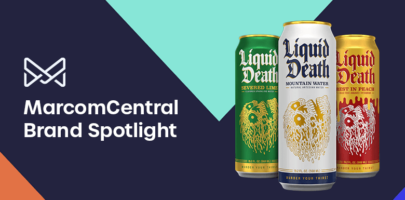Get news, updates, and insights delivered straight to your inbox.
Content Lifecycle Management: What is it and 5 Stages for Success

Without a solid marketing strategy, most of your content will remain unused and unread, ultimately wasting resources, time, and effort. Content lifecycle management (CLM) is a process that helps you get the most out of your content by maximizing its value and ROI at every stage.
What Is Content Lifecycle Management?
Content lifecycle management is the process a piece of content goes through, from creation to release and post-publication maintenance.
CLM requires developing, managing, and storing content over its entire lifecycle, so to successfully execute successful CDM, companies must have several things in place:
- Effective software for managing digital assets
- Subject matter experts for each stage of the lifecycle
- Understanding of best practices for creating digital assets
- Consistent communication between departments
CLM is crucial because it helps organizations keep track of their content and ensure its quality, keeping it up-to-date, engaging, and ultimately successful. It also helps reduce costs by avoiding duplicative work and cutting down on content waste, improving efficiency.
Organizations must design and implement a CLM strategy that fits their needs and goals. Still, there are common elements to be included in any CLM strategy, such as defining those responsible for each content stage, deciding if content is no longer needed, and choosing whether to store or delete it.
CLM is a continuous process that you should regularly revisit to ensure that you have met the organization’s content needs.
Successful CLM in 2022 increases content life and decreases the costs associated with content creation. A successful content development lifecycle has five distinct stages — development, creation, storage, publishing, and updating — which you can follow to ensure that your content is relevant and helpful and that it reaches your target audience.
The Five Stages for Success
These phases are essential for every organization that wants to create helpful, relevant content.
Developing a Strategy and Workflow
The first stage requires devising a clear plan for your content development lifecycle. You need to know what your goals are and what strategy you’re going to use to achieve them. What is your marketing goal? Who is your target audience? What kind of content will resonate with them?
Furthermore, what resources do you need to create the content? What platforms will you use to publish it? Successful planning proves helpful later on as you analyze the results of your content. Once you have a plan, you can move on to creation, where you will write, design, and create.
Creating the Content
Next, you create the content itself. Employees, customers, or other sources can handle development. This process is where you’ll need to put your ingenuity and hard work into action, including writing, editing, and designing the piece.
Generating ideas is the first step in content creation. Once you have ideas, you can develop them into full-fledged pieces. A content strategy will come in handy here, as it will help to determine the best format and approach for your ideas.
When creating content, it’s essential to keep your target audience in mind. It would help if you made every asset with a purpose and audience in mind. Maintaining brand consistency is also vital.
This process is where you put your ideas into a format that can be published, such as a blog series, whitepaper, social media graphics, and other web content. Content is also edited and curated in this stage for quality and accuracy. Make sure to proofread your work before proceeding to the next stage of the content development lifecycle.
Storing Assets
Proper asset storage is essential after creation. Once you complete your assets, take the time to organize them in an easily searchable format. Taking the extra time to complete this tedious task will save you a lot of future pain.
For uniformity, marketers should name their assets using the same convention. A brand asset management solution supports storing and versioning assets, making it easy to search for content using keywords, metadata, or SKUs. This way, you can find all related files in one place.
Editing and Publishing
The fourth stage involves editing and publishing the content in a format that employees, customers, or other audiences can access. Make it available for people to see and promote it on social media, email marketing, and your website.
This is also a good time to measure your analytics to see how people respond. You’ll need to choose the right platform(s) and CMSs to publish on and develop a marketing strategy to get your content seen by your target audience. You can make changes to improve performance based on the data you collect.
Updating Content
The fifth and final stage is updating content. Publishing content doesn’t mean you will never see it again. You should regularly update it to keep it fresh and engaging. In this stage, content is kept accurate and relevant.
You’ll need to continue to promote your content and monitor its performance over time. You should also update your content regularly to remain relevant and engaging. It also involves monitoring your analytics to ensure that everything performs well. When the content is no longer needed, it is either archived or deleted.
Preservation is key to managing your content development lifecycle. Determine what can go and what remains useful. Review your content regularly to ensure that it meets your standards. If it doesn’t, take appropriate action to fix it before it’s too late.
Content Lifecycle Management Helps You Achieve Your Marketing Goals
CLM is a critical process that takes your team through the creation, publication, distribution, archival, and deletion of content. It aims to ensure that your work is effective and efficient at every stage of its lifecycle, as well as the overall success of your marketing strategy.
Generating high-quality content takes time and effort, but having a successful marketing process is worth it.
By following these five stages, you can create superior content that will resonate with your audience. Ensure you have the resources you need to complete all stages of the content lifecycle.


